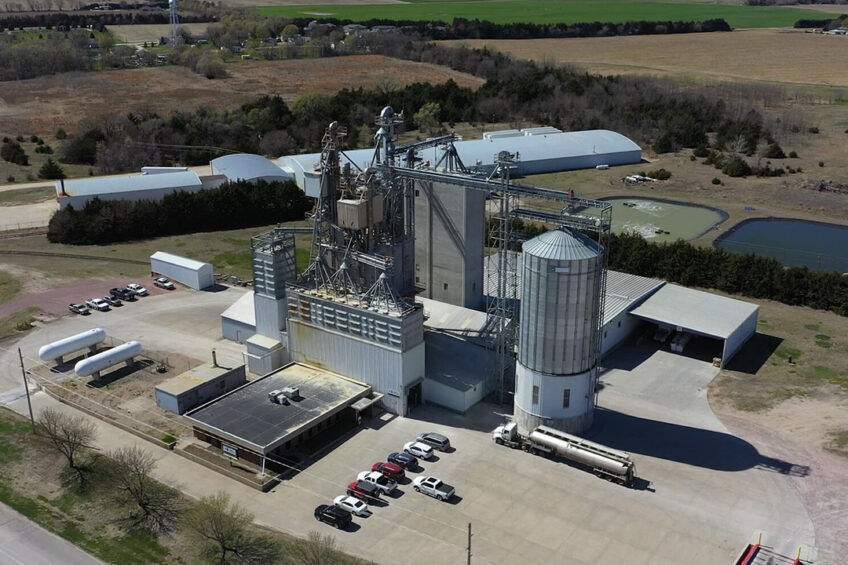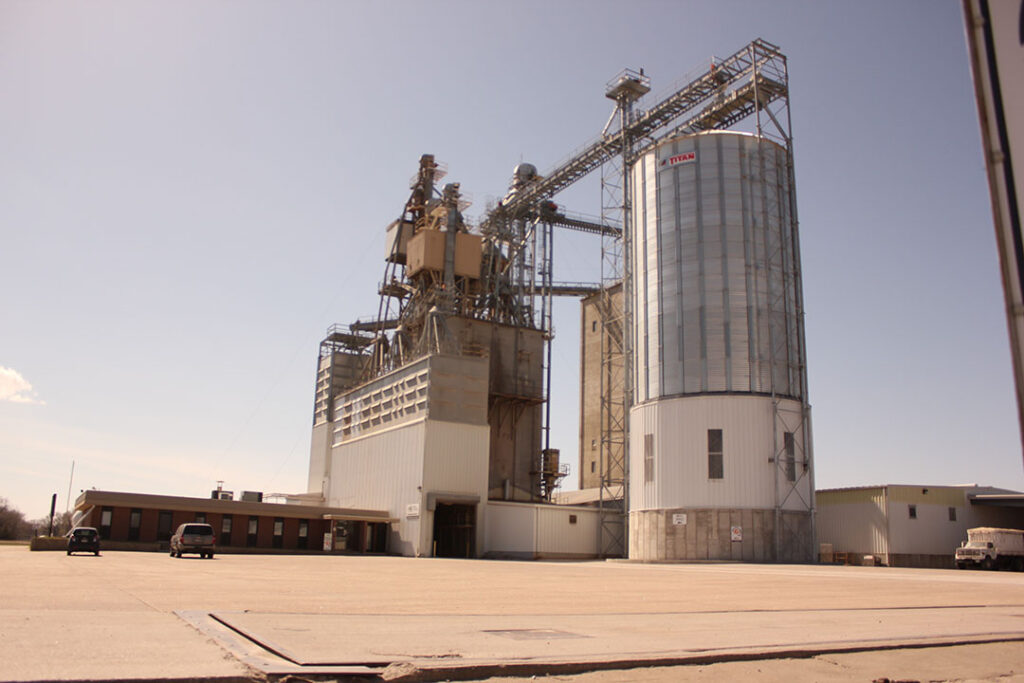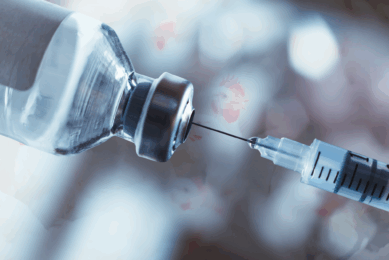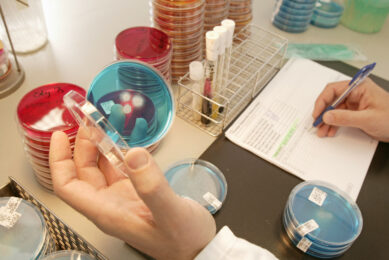Transitioning to a certified antibiotic-free feed facility

More and more consumers want meat and poultry products from livestock raised without antibiotics and therefore demand is rising for certified antibiotic-free feed. For Central Valley Ag, in York Nebraska, this is an opportunity.
Right now, after transitioning a small, older mill to a certified antibiotic-free facility producing pet food for small vegetarian pets, such as rabbits and guinea pigs, the company is transitioning a second, larger livestock feed mill located in Duncan, Nebraska. Here it will produce certified antibiotic-free supplements, minerals and complete feeds for poultry, swine and beef cattle. As a consequence of needing to meet the existing regulations and requirements of the third-party audits, the products produced at the renovated facility will also meet human food grade standards.
Upgrade and added capacity
“We had converted our smaller mill in Hinton, Iowa, 6 years ago and when we maxed out our capacity there, our Duncan mill became the next obvious choice for us,” explains Robert Turek, CVA senior vice president and director of key feed accounts. “Renovating an existing mill takes much more time and thought than building a new facility,” he says. “We’ve spent 3 years researching and planning this conversion and the transformation of the mill will most likely take us a full year and a half to complete. When complete and fully operational, the total yearly capacity will be 250,000 US tons, yearly.”
The market for antibiotic-free feeds is still a relatively small segment, but it’s growing.
Meanwhile, the Duncan plant remodel will allow a massive capacity boost, by as much as 3 times in some of its feed market segments. Turek explains that the increased throughput was a “happy accident”, because when they added new technologies and equipment for the antibiotic-free feed production, they discovered that capacity could increase significantly, too.
Regarding the Duncan plant’s history, Turek notes that it was built 40 years ago primarily as a mill for beef cattle feed. “It does not currently have the throughput, capacity or automation to produce low-cost feeds for today’s integrated and consolidated industries of swine, poultry and beef,” he explains. “Shifting focus to high-value and high-quality production segments like antibiotic-free, allows us an opportunity to provide more and better services for these segments that are positioned and willing to pay for them. The market for antibiotic-free feeds is still a relatively small segment, but it’s growing.”
Consumer trends
In terms of consumer trends, if we consider some large US restaurant chains, sandwich chain Panera started offering some antibiotic-free (ABF) chicken products in 2004 and now all its chicken products are antibiotic-free, as are all the meat products served at Chipotle (Mexican) restaurants.
It’s also been about 7 years since major US integrated poultry producer Perdue achieved 100% antibiotic-free production in 2017. Beyond these developments, getting a sense of the market size for ABF feed is not straightforward.
stringent regulations surrounding antibiotic use in agriculture pose a significant restraint
In a report released in November 2023, global market research firm Verified Market Reports states that the feed antibiotics market is poised for substantial growth due to escalating demand for livestock products, driven by population growth and rising disposable incomes. The firm identifies Bayer, Merck, Zomedica, Elanco, Sanofi, LG Chem and Luitpold Pharmaceuticals as the top feed antibiotic producers.
The report authors add, however, that “stringent regulations surrounding antibiotic use in agriculture pose a significant restraint” to the current and future feed antibiotics sector. “The global push for antibiotic-free animal farming practices and concerns about antimicrobial resistance are challenges inhibiting market growth. As the industry strives for sustainable alternatives, balancing growth with regulatory compliance remains critical for stakeholders navigating this dynamic landscape.”

CVA: History in a nutshell
Returning to Central Valley Ag (CVA), its history as a farmer-owned cooperative began in 2003, specialising in products and services related to feed, grain, agronomy and energy production. From being first formed by 32 farmer-owned local cooperatives, the company has since united with several cooperatives in Iowa, Kansas and Nebraska, making it the largest and one of the strongest cooperatives in the US Midwest, producing animal feed products that are distributed in more than 30 countries globally. The board of directors consists of local agricultural farmer producers and leaders in various areas of industry expertise, economics and community development.
Meeting regulations for antibiotic-free
As the Duncan mill has been converted from a conventional facility to antibiotic-free, its official status as ‘certified antibiotic-free’ is retained on an ongoing basis from both customers and internal assurance. “Each of our high-value Duncan mill customers will audit the plant at least once a year,” Turek says, “and we hold ourselves accountable as having this status is part of our standard operating procedures in our HACCP (Hazard Analysis and Critical Control Points) certification. We also have an annual third-party audit of our HACCP plan.”
A thorough cleaning was part of the process, of course, particularly in the areas of the feed mill where the equipment had previously been exposed to medicated feeds. They were first physically cleaned by hand. “Once that was finished, we flushed them with non-medicated feed products and then we tested the flush material for evidence of residues. Currently, all of our tested areas have returned results of non-detectable levels for any of the medication we used in the past,” he said, adding that new equipment had also been installed which had never been exposed to medications.
Turek says it’s been very easy to pass certification protocols from new customers wanting CVA to make their non-medicated feeds. Not having medication anywhere at the facility means that there should be no issues.
New equipment
Some of the new equipment added at Duncan includes rerouted receiving and loadout product flows and product flows to packaging and toting. There have also been upgrades for all legs, mixer and product cleaners. The steam harness and steam distribution system has been completely upgraded and expanded.
Duncan has now also enhanced process control automation, including full pellet mill automation, which has increased pelleting speed 3 fold and improved its pellet durability indices by 16.25% at the same time. The pellet screeners have also been upgraded, with the addition of an in-line metal detector for finished feeds.
Looking forward
While the pandemic has driven demand volatility, CVA is starting to see a levelling out from the highs and lows of the past 2 years. “Our biggest growth opportunity today is from high-value animal genetics companies, as the demand to increase animal productivity at the farm is a premium to the market right now,” says Turek. “These companies value our ability to deliver quality feed and biosecurity, particularly with the intense disease challenges our industry is now facing.”











